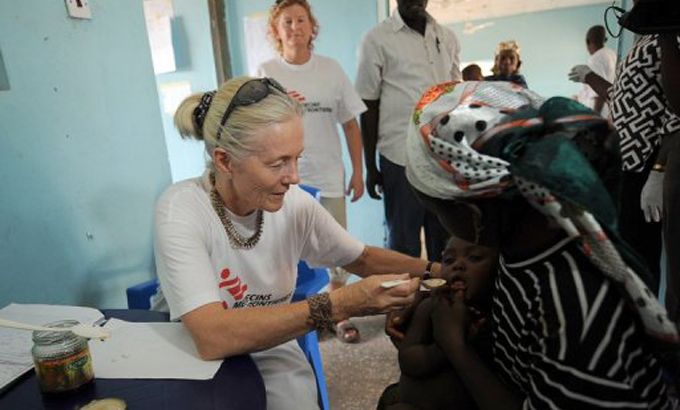Aid group slams Nigeria for lead poisoning
Doctors Without Borders says government has not done enough as aspiring citizens continue to unsafely mine gold.

A deadly lead poisoning outbreak that began two years ago in northern Nigeria continues to claim young victims even today, an aid agency official has said.
Ivan Gayton of Doctors Without Borders criticised the government of oil-rich Nigeria on Thursday for not taking the threat seriously, despite 4,000 children already being sickened by the outbreak linked to gold mining.
Keep reading
list of 4 itemsAfter the Hurricane
World’s coral reefs face global bleaching crisis
Why is Germany maintaining economic ties with China?
Foreign aid groups have done much of the work to clean the villages affected in rural Zamfara state and provide care to the children, who likely will suffer long-term brain damage from their exposure to the lead. Meanwhile, tests show that lead is returning to areas that have been cleaned.
“Quite frankly, the decision makers are not here today,” Gayton told journalists who gathered for the end of a two-day conference in Abuja on the outbreak. “For me, its a great disappointment.”
The existence of gold deposits in Zamfara along the border of Niger had been long known. But it wasn’t until gold prices soared in recent years that villagers began heading into the bush to search for it.
Soon the poor herdsmen and farmers could sell gold for more than $23 a gram – a huge sum in a country where most people live on less than $2 a day.
Lead poisoning outbreak
However, the ore brought back to the villages in Zamfara contained extremely high levels of lead. Fathers carried the precious rocks home to store inside their mud-walled compounds, sometimes leaving them on sleeping mats. Wives often broke the rocks and ground them, sending dust and flakes into the villages’ communal areas.
High levels of lead exposure can damage the brain and nervous system, result in behaviour and learning problems such as hyperactivity, or cause slow growth. Lead also can cause reproductive problems, high blood pressure, nervous disorders and memory problems in adults. In severe cases, it can lead to seizures, coma and death.
It wasn’t until 160 children died and others went blind and deaf that authorities in 2010 realised the region faced a lead poisoning outbreak, which the US Centers for Disease Control and Prevention called “unprecedented”.
An international team of doctors and hazardous waste experts arrived in Zamfara in mid-May 2010 to clean the region, but seasonal rains halted their work.
In the time since, the cleanup work and the medical care for those affected has come almost entirely from foreign aid groups. While the government ordered the halt of mining by local villages, the practice continued.
A January 2011 report said some villages already cleaned by foreign experts showed traces of lead and mercury again because residents had begun mining again without taking any precautions.
Gayton called on Nigeria’s government to release $5.3 million for the cleanup effort. He also said the government needed to educate those living there that precautions could make mining safe.
“It’s possible to do the environmental remediation and it is possible to do safer mining,” Gayton said. “We need not die in search of livelihood. It can be done safely.”